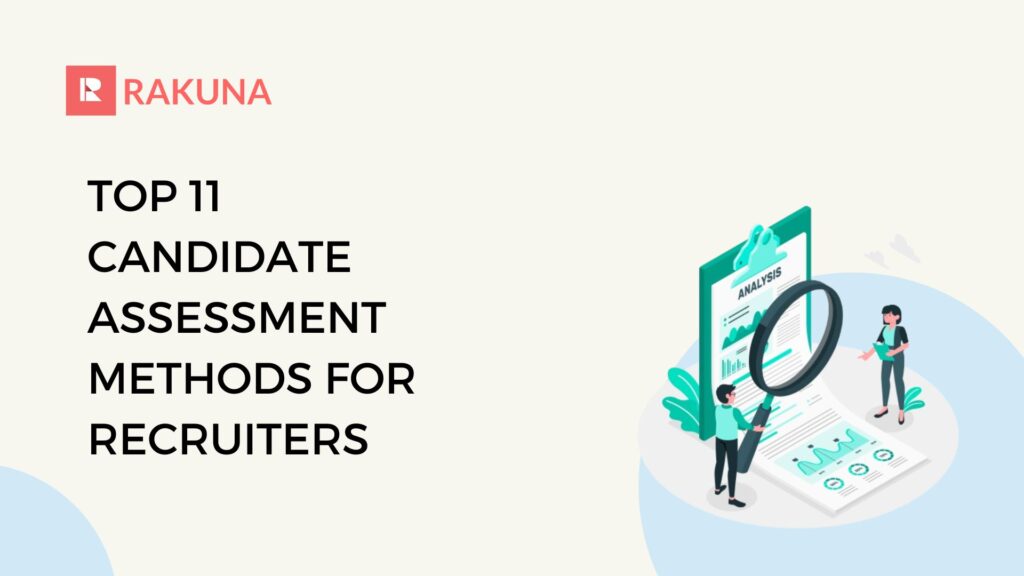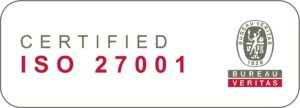Overlooking candidate red flags during the interview process can lead to bad hires that are costly. Beyond the financial burden, which a CareerBuilder survey estimates at nearly $17,000 per bad hire, they damage team morale, derail project timelines, and dilute company culture.
Beyond the Basics

While experienced recruiters are well-versed in spotting basic red flags like chronic lateness or badmouthing previous employers, the most dangerous warning signs are often far more subtle. This guide goes beyond the basics. We explore advanced strategies for uncovering hidden red flags, from micro-expressions to narrative inconsistencies, which equip you with the tools to identify dealbreakers that even seasoned pros might miss.
Subtle Red Flags
These subtle cues, easily missed if you’re not looking for them, can range from how they handle pre-interview communication to their body language. Overlooking these seemingly small details can significantly impact a new hire’s success and your team’s overall dynamic. This section will help you identify and navigate these nuanced red flags so you can make confident hiring decisions and build a thriving team.
The Mirroring Mismatch

Human communication is more than words—body language plays a huge role in trust-building. One often-overlooked signal is mirroring, a subtle psychological behavior where people unconsciously mimic the gestures or tone of those they’re connecting with. In recruiting, this matters.
If a candidate consistently fails to mirror your tone, posture, or energy—even after warming up—it could signal discomfort, disengagement, or a lack of adaptability. For instance, if you lean in to show interest and the candidate stiffens or pulls away, it may reveal difficulty connecting in team dynamics or reluctance to collaborate.
Tip: Consider how the candidate responds to positive social cues. Are they closed off or overly rigid? In roles requiring collaboration and empathy, this could be a mismatch.
Vague or Evasive Answers
Generic responses or deflecting questions can be a red flag, signaling a lack of genuine experience or preparation. For example, if a candidate mentions “leadership experience,” a simple follow-up isn’t enough. Don’t just ask for an example; probe deeper. Ask about a specific instance where they demonstrated leadership, the challenges they faced, and the quantifiable results they achieved. If they struggle to provide concrete examples or metrics, it might indicate their “leadership” was more passive than impactful.
Ask follow-up questions like:
“What was the biggest challenge you faced in that leadership moment, and how did you measure success?”
Overly Rehearsed Responses
A well-prepared candidate is great. But if their answers feel robotic or scripted, it might indicate a lack of genuine self-awareness or poor improvisational skills. This is especially important for roles that require quick thinking or real-time collaboration.
Break through the script with unexpected prompts:
“What’s something on your resume that rarely gets discussed in interviews?”
“If you could redo one professional decision, what would it be and why?”
This approach helps you observe how they think under light pressure—a key predictor of agility and self-reflection.
Lack of Curiosity/Engagement
A passive candidate who asks few or no questions demonstrates disinterest or a lack of preparation. Engaged candidates typically come prepared with insightful questions about the role, the team, the company culture, and future opportunities. If they fail to ask any questions, it may signal disinterest, a lack of critical thinking, or insufficient competence – or perhaps all three. Look for candidates who engage actively and show genuine curiosity – it demonstrates they’ve taken the time to research and are truly invested in the opportunity.
💡 Look for thoughtful questions about team collaboration, expectations in the first 90 days, or how success is measured in the role.
Inappropriate Language or Humor
Professionalism doesn’t mean being stiff—but it does mean knowing the difference between personable and inappropriate. If a candidate makes off-color jokes, uses excessive slang, or references sensitive topics without prompting, it could be a preview of poor judgment or cultural mismatch.
Think of this not just as a red flag for decorum, but for emotional intelligence (EQ)—a predictor of long-term success, especially in client-facing or leadership roles.
Name-dropping and Excessive Jargon
Dropping buzzwords or high-profile names can seem impressive—until you realize it’s a smokescreen. Candidates who rely on jargon or affiliations instead of discussing how they applied knowledge are often masking inexperience.
In technical interviews, a great way to cut through the fog is to ask:
“Explain this process to someone without a background in your field.”
“Tell me how you applied [tool/technique] in a real situation.”
Clear, plain-language explanations reflect real mastery—not memorized talking points.
Shifting Blame
Watch how candidates talk about past challenges. Do they take responsibility, or is it always someone else’s fault? Candidates who blame others consistently are likely to struggle with accountability in your organization.
Psychologist Dr. Tasha Eurich’s research on self-awareness shows that leaders who take ownership are substantially more effective in their roles. During interviews, look for candidates who speak to lessons learned and how they’ve grown from setbacks.
Inappropriate Attire
Dress code expectations vary by industry—but regardless of the setting, preparation and respect matter. A candidate who shows up underdressed (or overdressed in a casual setting) may lack situational awareness.
For example, jeans may be perfectly fine at a Bay Area startup, but showing up in the same for a client-facing role at a consulting firm raises concerns. It’s not about fashion—it’s about cultural fit and context awareness.
Unexplained Tardiness
Life happens. But candidates who arrive late without notice or a valid reason may be signaling poor time management or a lack of consideration. Worse, if they don’t acknowledge it at all, it shows a lack of accountability from the get-go.
💡Look at how they handle the slip: Do they apologize? Offer a brief but valid reason? Or brush it off?
Patterns of lateness during the hiring process often carry into the workplace.
Interrupting During Interviews
Frequent interruptions or speaking over the interviewer can be more than a conversational quirk—it’s a marker of poor active listening skills. This behavior can derail team communication, especially in collaborative or client-centric roles.
If a candidate consistently cuts you off or responds before you’ve finished your question, it may reflect impatience, insecurity, or even arrogance.
Breaching Confidentiality
This is a non-negotiable red flag. If a candidate shares proprietary information from their current or previous employer—client names, financials, internal strategies—it’s a clear breach of professional ethics.
Hiring someone who overshares now could expose your organization to legal or reputational risk later. Trust begins in the interview room, and discretion is part of that trust.
11 Subtle Candidate Red Flags Your Team Must Watch For
1. Micro-Mirror Mismatch
⏹ Poor rapport or lack of engagement in body language and tone.
2. Vague or Evasive Answers
⏹ Generic responses with little detail or quantifiable results.
3. Overly Rehearsed Responses
⏹ Scripted answers; struggles with improvisation or authentic dialogue.
4. Lack of Curiosity
⏹ Doesn’t ask meaningful questions about the role, team, or company.
5. Unprofessional Language or Humor
⏹ Uses off-color jokes, inappropriate slang, or shows poor judgment.
6. Excessive Name-Dropping or Jargon
⏹ Masks shallow knowledge with buzzwords or affiliations.
7. Blame Shifting
⏹ Avoids responsibility; faults others for failures without reflection.
8. Inappropriate Attire
⏹ Dress is clearly misaligned with company culture or industry norms.
9. Unexplained Tardiness
⏹ Shows up late without notice or accountability.
10. Interrupting During Interviews
⏹ Frequently cuts off the interviewer; lacks active listening skills.
11. Breaches of Confidentiality
⏹ Discloses sensitive information about past employers or clients.
💡 Best Practice: One or two of these may not be disqualifying, but patterns of behavior are. Trust your instincts, probe deeper, and document what you observe.
The Danger of Discrepancies: Spotting Contradictions

Recruiters are trained to look for patterns—but sometimes the most telling signals are the ones that don’t quite line up.
Inconsistencies in a candidate’s story—whether between their résumé, interview responses, or even online presence—can reveal more than just forgetfulness. They can point to embellishments, gaps in experience, or misrepresentations that, if left unchecked, may lead to costly hiring mistakes.
According to a 2022 survey by ResumeLab, 56% of professionals admit to exaggerating on their résumés, while 29% confess to outright lying. That’s why spotting contradictions isn’t just helpful—it’s essential.
Let’s walk through the most common types of inconsistencies, what they could mean, and how to professionally investigate them during the hiring process.
Resume vs. Interview
One of the most common inconsistencies appears when a candidate’s résumé paints a polished picture, but their interview responses don’t match the skill level or experience claimed.
For example:
They list advanced Excel skills, but struggle to explain VLOOKUP or pivot tables when asked.
They claim leadership experience, but can’t describe a specific moment when they managed a team or handled conflict.
Rather than letting these red flags pass quietly, ask probing questions:
“Can you walk me through a recent project where you used [tool/skill] and what impact it had?”
If their story falls apart under light scrutiny, that discrepancy deserves a deeper look.
Storytelling Inconsistencies
Do the details of their work history shift depending on how or when you ask? Candidates who struggle to maintain consistency in their own stories—changing team sizes, timelines, or the role they played—may be stretching the truth or relying on memorized, non-genuine responses.
A smart technique here is to revisit earlier questions later in the interview:
“You mentioned earlier that you led a team of 4 on the migration project, but later said you supported someone else on it—can you clarify your role?”
This tactic is especially effective for roles that require high attention to detail or accountability.
Reference Check Discrepancies
Even strong interviewers can only uncover so much. Reference checks are where many truths emerge—especially when the narrative doesn’t match up.
Let’s say a candidate emphasized their strategic leadership, but a former manager describes them more as an executor than a visionary. Or the candidate claimed ownership over a project, but the reference says they only contributed part-time.
To catch these mismatches, tailor your reference questions based on the interview:
“The candidate spoke highly of their leadership in [project]. How would you describe their actual role and impact?”
If the reference’s feedback conflicts with the candidate’s version, it’s worth further discussion or clarification.
Timeline Gaps
Gaps in employment aren’t inherently suspicious—especially post-COVID, where career breaks became more common. But how a candidate explains these gaps matters.
Vague responses like “I took time off for personal reasons” or “I was between opportunities” can leave too much room for assumption. In contrast, honest answers—such as caring for family, dealing with health challenges, or pursuing professional development—are typically well-received when communicated clearly.
🔍 What to ask:
“Can you walk me through what you were doing between [Date A] and [Date B]?”
Compare their response with their résumé and previous answers. Transparency builds trust—evasion creates concern.
Changing Career Direction Without Clear Reasoning
In today’s workforce, non-linear career paths are increasingly normal. But repeated, unexplained jumps between unrelated roles or industries—especially at mid-career or leadership levels—can signal a lack of focus or direction.
Let’s say a candidate went from marketing to real estate to software development in a span of five years. If there’s no clear thread connecting these moves—like upskilling, personal growth, or a strategic pivot—it may indicate indecisiveness or job-hopping.
✅ Look for candidates who can articulate a clear narrative:
“Here’s why I made the shift, what I learned from it, and how it prepared me for this role.”
This kind of self-awareness is often more valuable than a perfect résumé.
Assessing Cultural Fit & Values: Signs and Solutions

A candidate might look great on paper, but a cultural mismatch can destroy team cohesion. Here is how to spot the warning signs and how to test for them.
The Warning Sign: Resistance to Feedback Candidates who react defensively to constructive criticism often struggle in collaborative environments.
How to Test: During a role-play or technical exercise, offer a small piece of constructive feedback. If they become dismissive or make excuses instead of absorbing the input, it indicates a fixed mindset.
The Warning Sign: Misaligned Goals
The Issue: If a candidate wants rapid management responsibility but your company has a flat structure, they will leave quickly.
How to Test: Ask: “Where do you see yourself in 3 years?” Compare their answer strictly against your company’s realistic growth path.
The Warning Sign: Values Misalignment Shared values are the bedrock of a strong culture.
How to Test: Use behavioral questions like “Describe a time you faced an ethical dilemma at work” or “Tell me about a time you disagreed with a decision made by leadership.” Their answers will reveal their true compass better than any “About Me” section.
Beyond the Interview: Pre- and Post-Interaction Clues

First impressions matter, and so do last impressions. A candidate’s behavior before and after the formal interview can be surprisingly revealing. From how they handle scheduling and communication to their follow-up, these interactions offer valuable insights into their professionalism, enthusiasm, and overall fit.
Treatment of Support Staff
How a candidate treats receptionists, schedulers, or assistants is a major character test. Rudeness or dismissiveness toward anyone they perceive as “below” them is a massive red flag for future behavioral issues.
Aggressive Follow-Ups
Enthusiasm is great; harassment is not. A candidate who calls repeatedly, demands immediate feedback, or ignores communication boundaries demonstrates a lack of professional awareness and respect for your time.
Social Media Consistency
While privacy is paramount, a check of public professional profiles (like LinkedIn) is standard. Look for discrepancies: Does their “Team Player” persona in the interview match their public posts? If they are badmouthing former employers online, they will likely do the same to you.
More Candidate Assessment Methods for Your Recruiting Team

At Rakuna, we prioritize the success and efficiency of recruiters as the cornerstone of our mission. To help your recruiting team effectively identify and address candidate red flags, we invite you to explore Rakuna’s free guide on the most widely used candidate assessment methods.
Download the guide today to equip your team with actionable strategies and tools for smarter, more effective candidate evaluations.
Addressing Candidate Red Flags Thoughtfully During Interviews
Spotting red flags during interviews is essential, but handling them with care is just as critical. Not every concern raised during an interview warrants disqualification—some issues may be minor and easily resolved, while others require deeper scrutiny before making a final judgment.
Here are actionable ways to address red flags when it’s appropriate to move past them:
Assess the Impact of the Red Flag
Red flags vary significantly in their relevance. For example, slight nervousness or occasional eye contact avoidance might simply reflect interview anxiety, not a lack of confidence or sincerity. Distinguish between minor quirks and serious concerns that clash with your organization’s core values. Is the issue truly detrimental to their potential success in the role, or is it something manageable or even irrelevant?
Investigate Further Before Drawing Conclusions
Don’t jump to conclusions. Use red flags as opportunities to delve deeper. If a candidate seems unprepared, gently probe with questions like, “Can you tell me more about your understanding of this particular responsibility?” or “How did you approach similar challenges in your previous role?” Further questioning can reveal if the issue is a one-off or a recurring pattern.
Gather Diverse Perspectives from Your Hiring Team
Red flag interpretation is subjective. Your colleagues might have different interpretations of the same behavior. Discuss the concern with your team to gain a broader perspective. A hiring manager might view a candidate’s direct communication style as assertive, while a team member might perceive it as aggressive. This collaborative approach fosters a more balanced and objective evaluation.
Explore Additional Assessments or Follow-Ups
If doubts persist, consider further evaluation methods. Beyond a second interview, consider skills assessments (e.g., coding tests, writing samples) or personality tests to gain further insights. A practical test, like a mock sales pitch or a data analysis exercise, can provide valuable real-world insights. These tools can either validate your concerns or showcase the candidate’s strengths, offering a clearer picture of their potential. Even inviting the candidate for a brief job shadowing opportunity could be informative.
Match the Red Flag to Your Company’s Values and Role Expectations
Context matters. A candidate’s independent working style might be a concern for a highly collaborative role but perfectly suited for a position requiring individual initiative. Evaluate the flagged behavior against your company culture and the specific demands of the role.
Provide the Candidate an Opportunity to Address the Issue
Transparency can be beneficial. Tactfully address your concern and invite the candidate’s perspective. For instance, you might say, “I noticed you seemed hesitant when discussing your experience with project management. Could you elaborate on that?” Observe their response. Do they become defensive, or do they acknowledge the concern and discuss how they are working on it? This provides valuable insight into their self-awareness and willingness to learn.
Look for Offsetting Strengths
Weigh the red flag against the candidate’s strengths. Perhaps their exceptional technical skills compensate for a less polished presentation style, or their impressive portfolio outweighs a gap in their resume. Consider their growth potential – some red flags can be addressed with training and mentorship.
Document and Monitor Potential Red Flags Post-Hire
If you proceed with hiring despite a red flag, document it and create a plan to address it during onboarding and initial performance reviews. This might involve pairing them with a mentor, providing specific training, or setting clear performance goals related to the area of concern. Regular check-ins and open communication can help ensure the issue is addressed effectively.
Practical Strategies: Detecting Candidate Red Flags When Interviewing Candidates

When concerns arise during the interview process, structured approaches can help confirm or dispel those doubts. These strategies allow you to delve deeper, gain diverse perspectives, and make more informed hiring decisions.
Stress Testing
Simulating real-world challenges reveals how candidates handle pressure. Present job-relevant scenarios, like dealing with a demanding client or resolving a technical emergency. Ask them to outline their approach, focusing on their decision-making process and problem-solving skills. Time-sensitive tasks or unexpected role-playing exercises can further assess their ability to prioritize, manage stress, and adapt to unforeseen circumstances. For example, ask a customer service candidate to role-play handling a complaint with a limited time to resolve the issue.
Behavioral Validation

Don’t just accept claims at face value. Ask for multiple, specific examples of behaviors tied to key skills. If a candidate claims to be a strong leader, ask them to describe different situations where they demonstrated leadership, outlining the actions they took and the results they achieved. Use the STAR method (Situation, Task, Action, Result) to guide their responses and gain clear, actionable insights. Don’t hesitate to drill down on specifics and clarify any ambiguous or evasive answers.
Multiple Touchpoints
Gathering insights from various sources provides a more holistic view. Cross-functional interviews expose candidates to different team members and communication styles. Observing them in casual settings like a coffee chat can reveal their more natural demeanor. Panel interviews allow you to observe how they handle multiple questions and personalities simultaneously. Ensure consistent note-taking among interviewers to identify recurring red flags or inconsistencies across interactions.
Hypothetical Scenarios and Case Studies
These methods assess problem-solving skills and critical thinking. Present industry-specific case studies or ethical dilemmas relevant to the role. For a marketing role, you might present a case study involving a declining product line. Observe how they analyze the situation, develop solutions, and justify their decisions. Open-ended questions encourage creative problem-solving and offer a glimpse into their thought process.
Context-Specific Follow-Ups
Follow-up discussions can uncover valuable details. Revisit resume claims and ask for role-specific feedback. For instance, “Your resume mentions experience with budget management. Can you tell me about a time you had to make difficult budget decisions?” Discussing long-term goals allows you to assess whether their aspirations align with the company’s trajectory and the potential growth opportunities within the role.
Third-Party Verification
External perspectives add another layer of validation. Thoroughly check references, contacting past employers or colleagues to verify key claims and identify any potential mismatches or red flags that weren’t apparent during the interview process. If appropriate and with due diligence for privacy, review their online presence – LinkedIn profile, portfolio websites, or public social media – for anything that contradicts their presented image or raises concerns relevant to the role.
Specialized Cultural Fit Assessment Methods

Beyond skills and experience, cultural fit is crucial for long-term success. Here is how you can modify the above-mentioned tests for the task:
Values Misalignment
Shared values are the bedrock of a strong culture. Behavioral interview questions, such as “Describe a time you faced an ethical dilemma at work,” can reveal how a candidate’s actions reflect their values. Scenario testing, with hypotheticals like “How would you handle a situation where meeting a deadline might compromise quality?”, helps gauge alignment with your company’s principles.
Reverse questions, where candidates inquire about your company’s values, can indicate genuine interest and reveal potential areas of dissonance. Pay attention to the types of questions they ask and the depth of their interest.
Assessing Teamwork Styles
Cultural fit hinges on how well individuals collaborate. Team compatibility simulations, like a mock project or group discussion, offer valuable insights into how candidates interact with potential colleagues. Observe their communication style, contribution to the group, and how they handle differing opinions.
Conflict resolution scenarios, such as “Describe a time you had a disagreement with a teammate. How did you resolve it?”, can reveal their approach to conflict and their ability to navigate interpersonal challenges constructively. Ask about preferred collaboration modes (e.g., independent vs. collaborative) to understand how their preferred working style fits with your team’s norms.
Long-Term Vision Mismatch
Aligning individual aspirations with your company’s trajectory is essential for sustained engagement and growth. Career path mapping, by asking candidates where they envision themselves in several years, helps determine whether their goals align with available opportunities within your organization. For instance, a candidate aiming for rapid management progression might not be a good fit for a company with a flatter structure.
Growth-oriented discussions, focusing on their adaptability and willingness to learn new skills, can reveal their openness to evolving with the company. Ask about times they’ve adjusted their career plans to accommodate organizational changes. Evaluate the realism of their ambitions relative to your company’s growth rate and structure. Overly ambitious timelines, while demonstrating drive, might also signal potential impatience or dissatisfaction if those expectations aren’t met.
To Conclude…
These advanced interviewing techniques empower you to go beyond surface-level assessments and identify potential red flags and dealbreakers that other recruiters might miss. Implement these strategies, refine your approach, and start bringing in qualified hires with minimal hassles!

Team Rakuna
The Rakuna Team comprises a diverse group of professionals hailing from various corners of the world.
With a passion to enable organizations to hire their next waves of talents, we are dedicated to help organizations stay updated on important recruiting technology and industry best practices.


